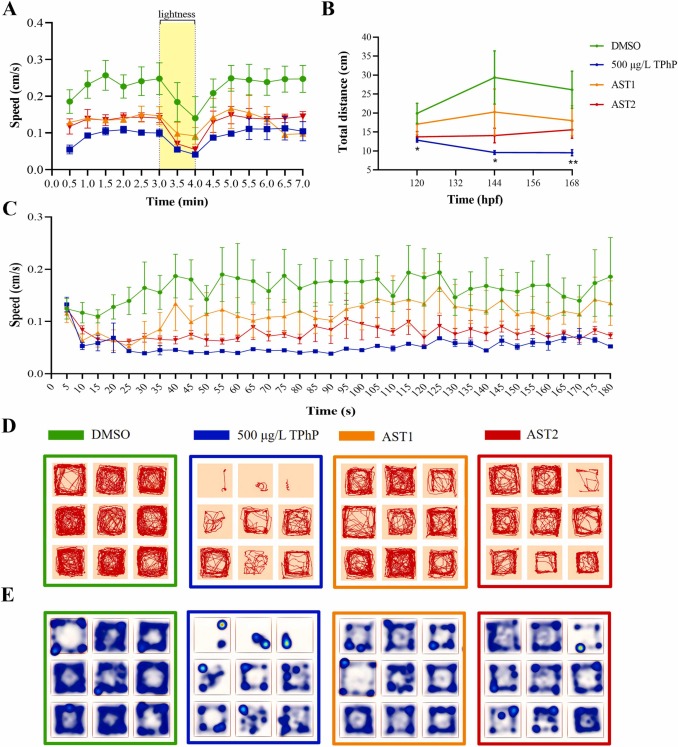Fig. 4 Astaxanthin (AST) can partially rescue the neurobehavioral disorders induced by TPhP. (A) The velocity of zebrafish larvae (at 6 dpf) was recorded in the DMSO, TPhP (500 μg/L), AST1: TPhP (500 μg/L) + AST (30 nM) and AST2: TPhP (500 μg/L) + AST (100 nM) groups, respectively (Model A). (B) The total distance traveled was calculated in each group (Model B). (C) The velocity of zebrafish larvae (at 6 dpf) was recorded in each group (Model B). (D) The tracking paths of zebrafish from each experimental group were shown in the figure. (E) A heatmap showing the path followed by nine zebrafish from each experimental group. The blue marks indicate the area the zebrafish passed through, and the depth of color represents cumulative frequency. Values represent mean ± SEM. In comparison with the control group, * p < 0.05, * * p < 0.01 (one-way ANOVA and LSD test was employed).
Image
Figure Caption
Acknowledgments
This image is the copyrighted work of the attributed author or publisher, and
ZFIN has permission only to display this image to its users.
Additional permissions should be obtained from the applicable author or publisher of the image.
Full text @ Ecotoxicol. Environ. Saf.

